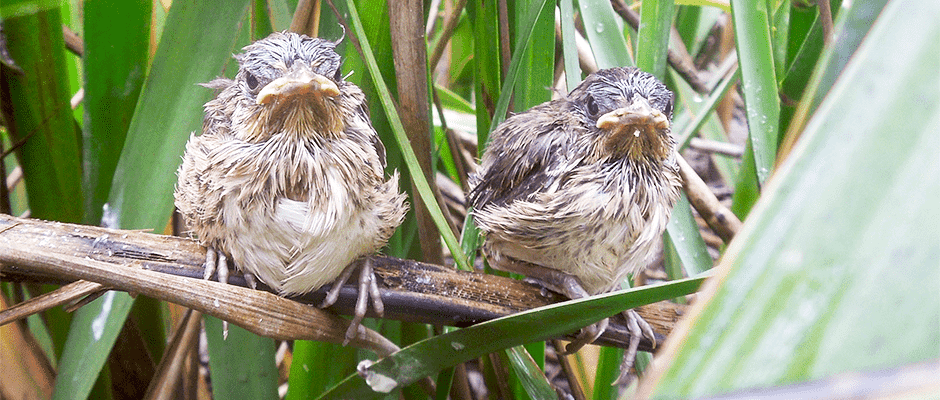Share this article
Sea-level rise: Predation to affect seaside sparrows more than flooding
When Elizabeth Hunter was doing her dissertation at the University of Georgia on the effects of sea-level rise on coastal birds, including seaside sparrows (Ammodramus maritimus), she noticed a lot more nests were getting depredated by predators than flooded by tides. Predation and tidal flooding are the two primary threats to seaside sparrow nest success.
In discussing her observations, Hunter, who is now a postdoctoral researcher at the University of Nevada-Reno, said: “Sea-level rise for most coastal birds was a big issue. There was a lot more concern in this context compared with the other issue of predation. I wanted to see what was the greater threat.”
She further explained, that when dealing with the two threats, seaside sparrows have the option of nesting lower in the vegetation to avoid predators or higher in the vegetation to avoid flooding. This nest height selection behavior makes the birds more resilient to the increased flood risk associated with sea-level rise, but as Hunter hypothesized, could create a trade-off that results in increased nest failure from predation.
To test her hypothesis, Hunter used baseline probabilities of predation and flooding from empirical data she and her colleagues collected as part of her dissertation on the coast of Georgia to develop a mathematical model to simulate seaside sparrow nest success under various sea-level rise conditions. The results of her model, published in The Condor: Ornithological Applications, suggest that predation risk should be more important than flooding risk under sea-level rise conditions because of the bird’s nest height selection behavior.
As sea-levels rise, nest heights will likely increase, which can improve nest success in areas with a low risk of predation, but could also lead to a reduction in nest survival in areas with a high risk of predation. Further, Hunter discussed that if sparrows begin to place their nests lower in the vegetation to avoid predators; this will increase their vulnerability to flooding under the modeled sea-level rise conditions. As a result, predation risk not only influences the probability of depredation but can also affect the probability of nest failure due to flooding.
Even when looking at the more extreme projections for sea-level rise using her model, Hunter claims that predation is still a bigger threat, though she acknowledges in her study that such scenarios are “unlikely to be realized, because suitable nesting habitat would be lost before such high levels of flooding could occur.”
While the species isn’t in imminent danger of becoming threatened or endangered, Hunter says that in 20 or 30 years, sea level rise could become a serious conservation problem for many salt marsh bird species and that flooding risks could be difficult to control. She says, that we “could have a bigger effect for populations if we think about reducing predation risk instead of just focusing on sea level rise.”
“Managers can consider putting up fencing to discourage mammalian predators,” or installing individual nest cages to improve nest success. For now, though, Hunter says she hopes to continue studying the birds. “We have no idea of how frequently there are really bad predation years,” she said, and “we need to understand a lot more about predation.”
Header Image: Seaside sparrow fledglings just after leaving their nest. ©Elizabeth Hunter








